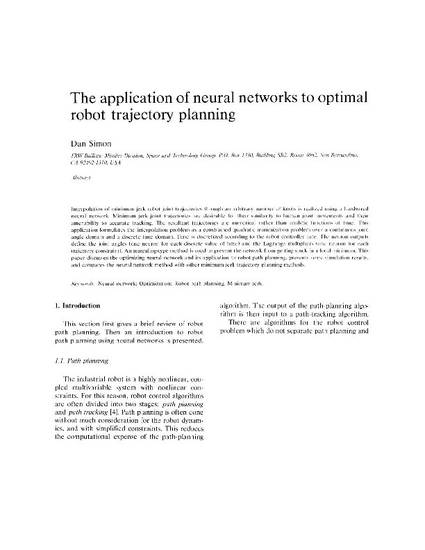
Interpolation of minimum jerk robot joint trajectories through an arbitrary number of knots is realized using a hardwired neural network. Minimum jerk joint trajectories are desirable for their similarity to human joint movements and their amenability to accurate tracking. The resultant trajectories are numerical rather than analytic functions of time. This application formulates the interpolation problem as a constrained quadratic minimization problem over a continuous joint angle domain and a discrete time domain. Time is discretized according to the robot controller rate. The neuron outputs define the joint angles (one neuron for each discrete value of time) and the Lagrange multipliers (one neuron for each trajectory constraint). An annealing-type method is used to prevent the network from getting stuck in a local minimum. This paper discusses the optimizing neural network and its application to robot path planning, presents some simulation results, and compares the neural network method with other minimum jerk trajectory planning methods.
